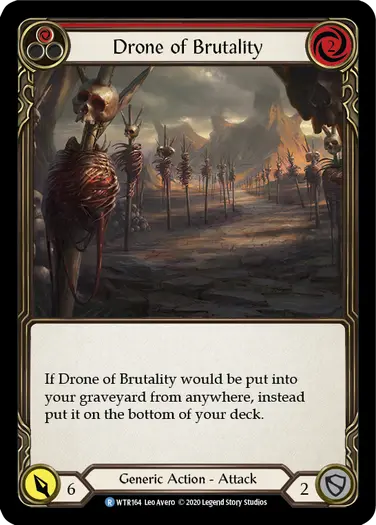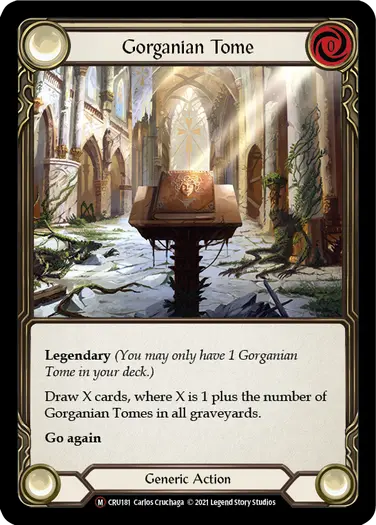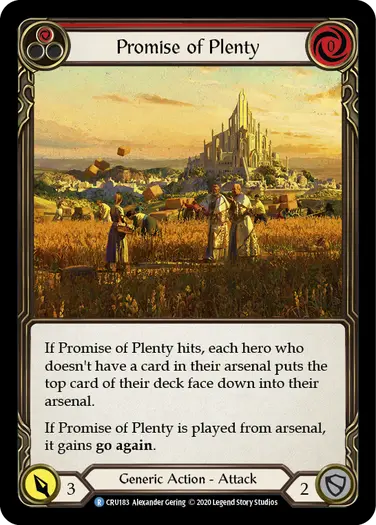We'd like to welcome guest writer Zachary Cauchi as he continues our brand new Jump Start series with his Ultimate Pit Fight introduction piece! Zachary is an Australian player and has been a ProQuest champion in both seasons. He finished in the Top 8 of the Sydney Battle Hardened tournament earlier this year, and enjoys playing both competitive and casual formats with the Brisbane Flesh and Blood community.
The 2022 World Championship earlier this year was full of exciting moments. 16 grueling Swiss rounds of Draft, Blitz and Classic Constructed, all culminating in a Top 8 where Michael Hamilton was crowned the first ever Flesh and Blood World Champion. The weekend felt electric as history was made but what took me by surprise was a little video of a game I stumbled upon that piqued my curiosity in a way I didn’t expect. The game wasn’t broadcast live, it didn’t even take place in the main convention hall, but the format being played might just be my favorite way to play Flesh and Blood.
Red Zone Rogue posted a clip of himself taking part in a really special game. Playmats overlapped haphazardly on a small table barely big enough to fit two players, let alone five. A deck of nearly 200 cards is stacked in the middle of the table that each player collectively shares. The Shiyana player opts two cards and needs assistance to lift up this enormous communal deck in order to bottom the cards they were able to preview – and the entire table can’t help but laugh at the sheer absurdity of what is taking place. Moments like this are what makes Ultimate Pit Fight such a fun format to play. No two games play out the same and if you enjoy brewing unique decks and harnessing the power of often overlooked cards, this might be the format for you.
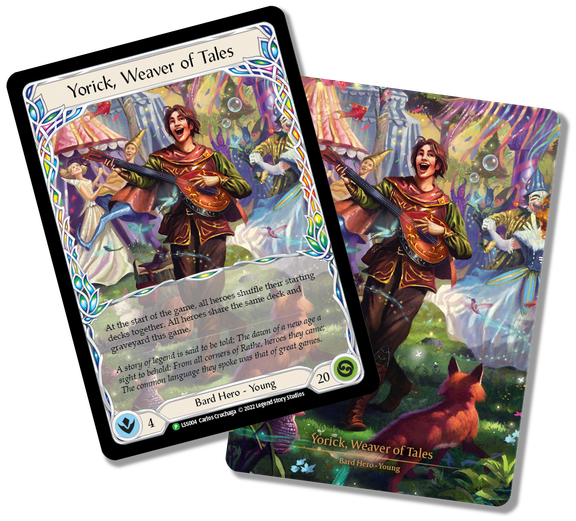
What is Ultimate Pit Fight?
Ultimate Pit Fight, or UPF for short, is a multiplayer format designed for casual fun with friends. Four or more players each build 40 card decks led by a young or Adjudicator hero of their choice. For up to date rules on card legality – check out the official UPF format page. You won’t find an extensive ban list on that page mind you, outside of official events, every card is legal in UPF. Ball Lightning, Duskblade and Drone of Brutality are all welcome here, even promotional cards that aren’t tournament legal such as December's Armory promo card, Shitty Xmas Present are allowed to be played. You can only attack and target the players you are sitting next to on your immediate left and right, and the last player left alive is the victor.
What makes this format so special and unlike any other format, is that multiplayer play unravels a lot of the conventional wisdom about how best to win a game. You start asking yourself questions such as – How do I best defend against the player to my left? Will I need cards left over to defend against the player to my right? How will I have anything left to make a play on my own turn? Maybe I should cut a deal with my opponent in order to team up against our common enemy…
Formats with more than two players also provide unique opportunities for players who love innovative deck building and playing cards that are often overlooked in competitive lists. The reason for this is that if one of the players brings a highly tuned, competitive deck to the table and quickly pulls ahead of the other players, it’s in the best interests of their opponents to team up and take them down before they can claim victory. Even the most optimized decks will struggle to succeed against the onslaught of two players. This self-balancing nature of the format is what lets unique brews and unconventional strategies shine. You could build a deck all around rolling dice as often as possible, or generating as much silver as you can to cash in later in the game – or even a deck built with cards just from your favorite artists! Anything goes in UPF. This format is your chance to build the deck you’ve only dreamed of playing.
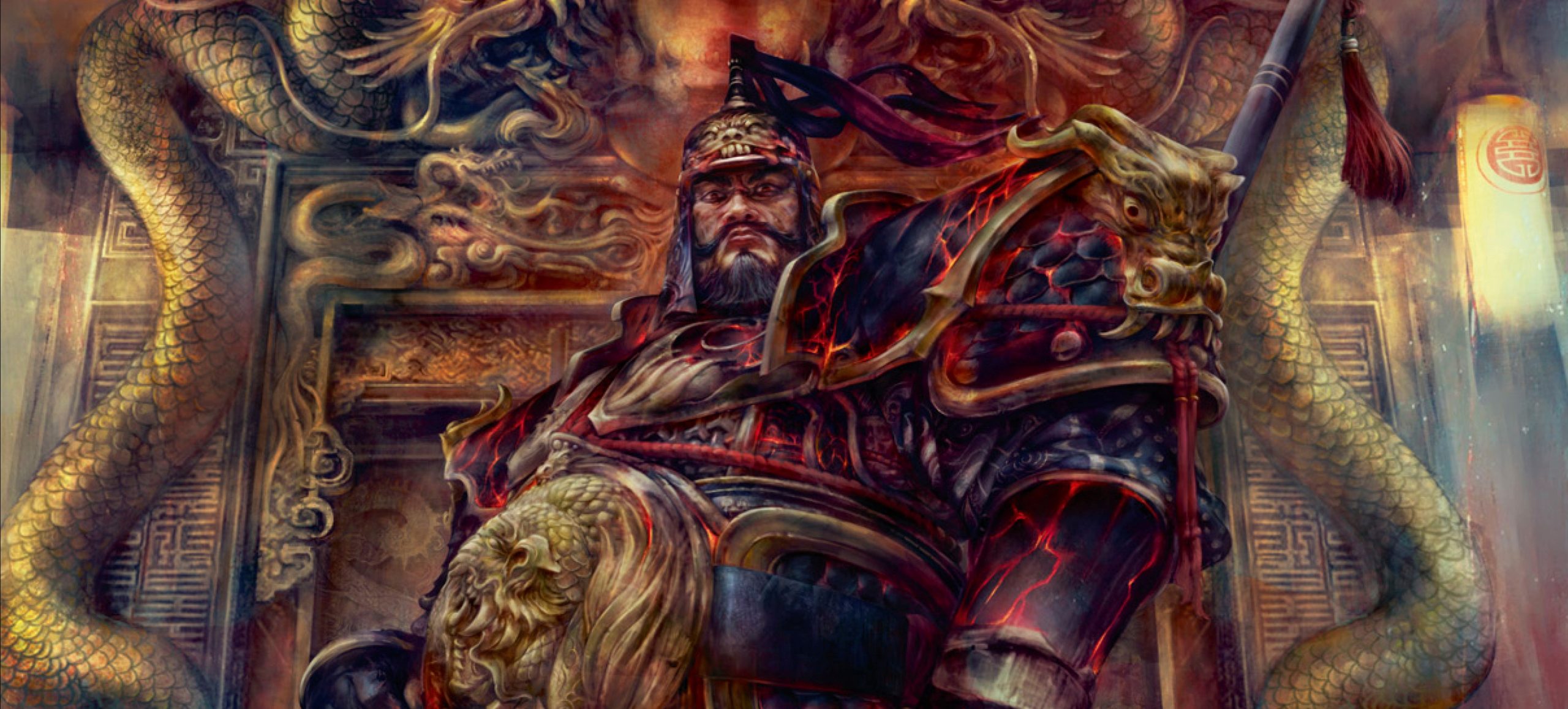
Why play UPF?
Some players might not be interested in playing a format where the best move might be to bide your time and avoid overextending early on, but a format like UPF needs to be looked at a little differently. While it might not be entirely in your control whether or not you win every game of UPF, in this format, the journey is more important than the destination. Some of the most fun I’ve ever had playing UPF is when something occurs that I’ve never seen happen in a game of Flesh and Blood before- even if it didn’t lead to my victory. Just being a part of those games is loads of fun – whether or not I even end up winning.
As an example, in one of my games I played This Round’s on Me, allowing all four players to draw a card. On the one hand, my opponents love free cards, but this brief moment of happiness was quickly dashed as the Valda player generated four Seismic Surge tokens thanks to a combination of their hero ability and Eathlore Bounty. This allowed them to crush our mutual opponent with a devastating Mangle attack without having to pitch a single card. Never before have I had an opponent thank me in a game of Flesh and Blood, and I quickly made a powerful ally. Moments like these where unlikely combinations of cards create powerful synergies are one of the main reasons why I would encourage you and your friends to try out UPF.
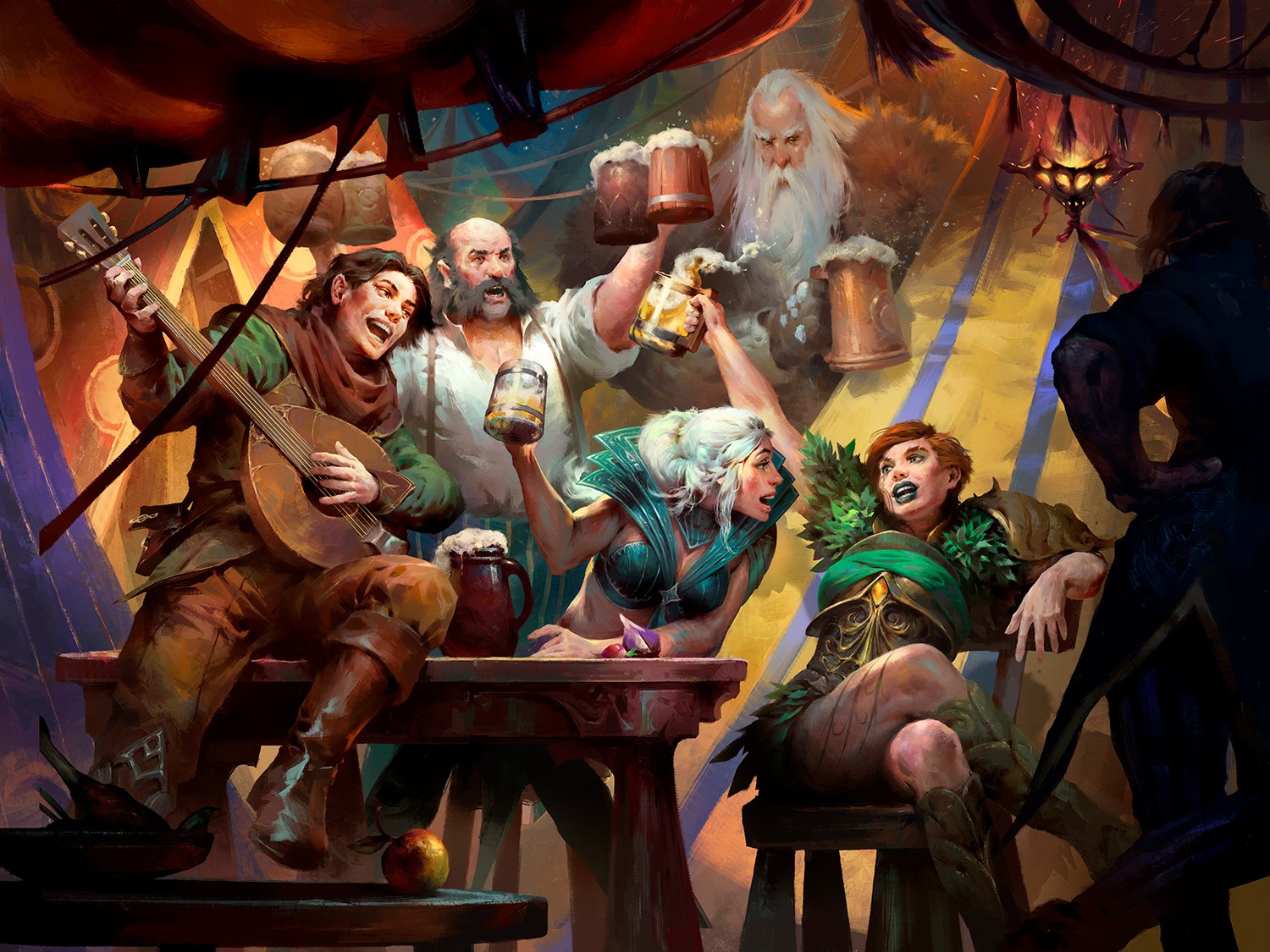
How can I get started?
Another strength of UPF is how easy it is to get started playing. Wesley Lingard recently published an article, Jump Start: Buying Your First Deck. In this article he details the different options players have when it comes to acquiring their first Blitz deck. Every single deck mentioned in his article is legal in UPF right out of the box, so you can jump into the fun straight away. This is a great option for players new to Flesh and Blood entirely to join you in a friendly game. However, if you want to dive deeper, there are some considerations you should make before building your first deck.
Firstly, games in UPF can be long. In an average game you have 60 points of your opponents' life to churn through. If you’re blocking frequently, games will usually go to your second cycle of pitched cards. For this reason, having a plan for the late game is recommended. For some heroes with powerful weapons, swinging with your sword or hammer can be enough to close out games, but other heroes will have to get more creative. Remember, in UPF almost every card is legal, so Drone of Brutality is a powerful tool to make sure your deck won’t run out of gas in the late game.
Secondly, cards that scale with multiple opponents grow in power in this format. Gorganian Tome can draw up to four cards if your opponents have already played their copies, making it one of the most powerful cards in the format (you just need to be a little lucky when you draw it!). Arcanite Skullcap requires you to have less life than any opposing hero, making it very likely to give you access to Arcane Barrier 3, as well as an extra boost to your defense. Cards that give your opponent a little free value are great options as well. They can be used as a bargaining chip to encourage your opponents to leave you alive for longer. Coax a Commotion and Promise of Plenty are fantastic if you need to make a quick friend at the table and survive another turn cycle.
Ultimately,
UPF is a fun way to play Flesh and Blood that I hope more players try out. Not only is it a refreshing way to play with your friends, but it’s a great way to grow your local community. Getting a couple of players together before an Armory to play a low-stakes, casual format is a fantastic way to welcome new players to the game. Not only due to its tendency for fun games whether you win or lose, but also because there’s no cap on the number of players in a game.
So pull up a chair for all who care to join – and give this format a try for yourself.
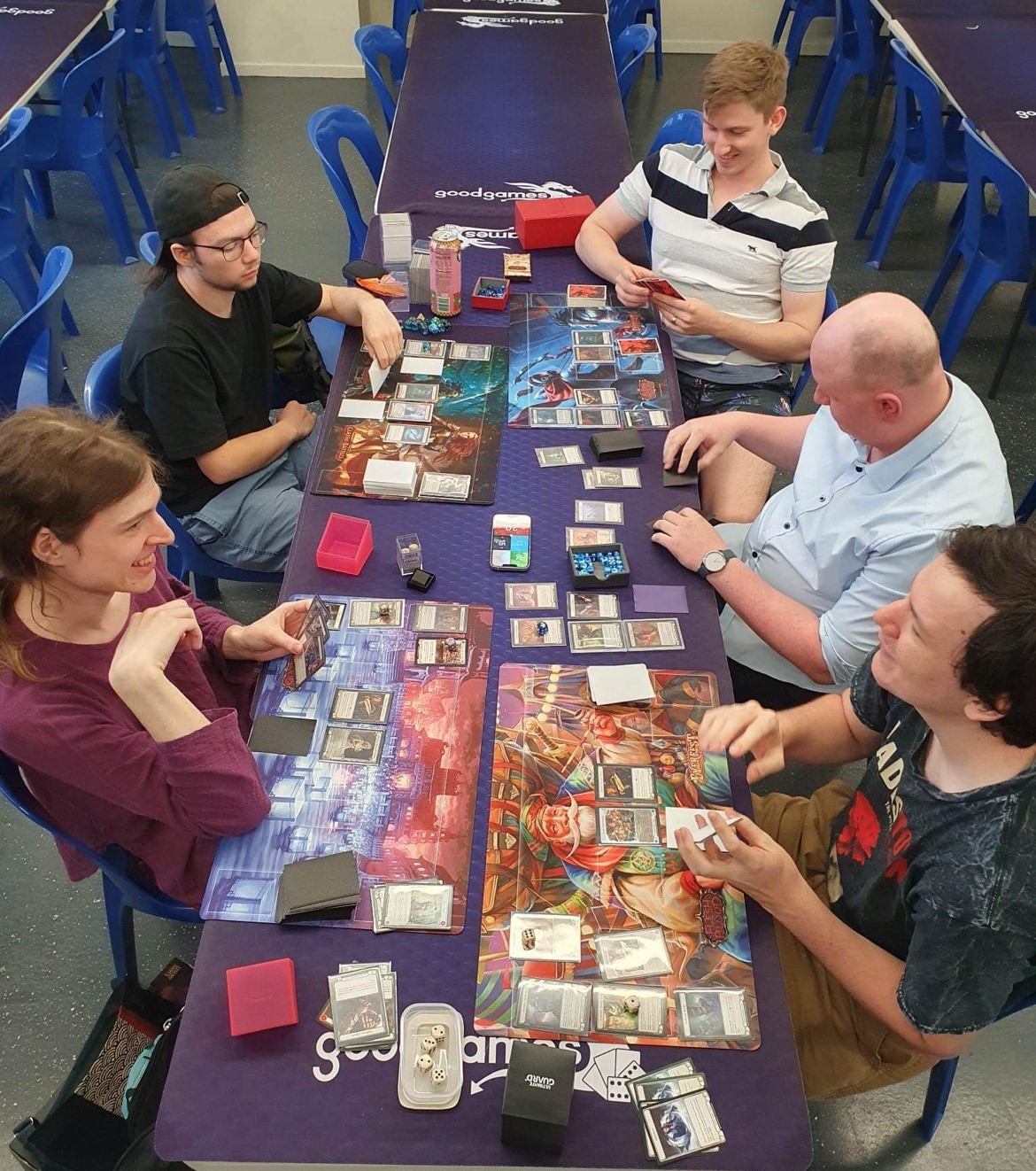
Zachary Cauchi is a competitive Flesh and Blood player and author of content relating to gameplay and strategy. The opinions expressed in the above article are his own and do not necessarily reflect the views of Legend Story Studios.
